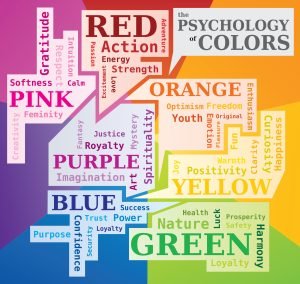The Impact Of Color Psychology In Logo Design
Throughout history, civilizations have used color in communication and symbolism. Ancient Egyptians believed red represented life and vitality, while blue represented the heavens and the afterlife. In Hinduism, the color saffron is associated with purity and spirituality.
In today’s world, colors are fundamental to branding and graphic design, specifically in logo creation. If you’re a logo creator, you’d understand the significant role of colors in marketing because a logo is a brand’s most powerful emblem. Not only does it represent the company’s identity, but it also conveys its values and message to its audience.
A well-designed logo can make a lasting impression on customers’ minds and leave a positive impact. One of the critical elements in logo design is color psychology.
Color psychology is the study of how colors affect human emotions, behaviors, and perceptions. It’s an enthralling subject of study that has captivated scientists, designers, and marketers alike. Colors elicit strong emotional responses and significantly impact mood, energy, and productivity. To give you an idea, the following are some common associations and emotions linked to different colors:
- White: innocence, simplicity, purity, peacefulness, virginity
- Gray: sophistication, neutrality, formality
- Black: elegance, power, sophistication, misfortune, death
- Red: energy, passion, excitement, urgency, action, love
- Orange: warmth, enthusiasm, creativity, youth, pleasure
- Yellow: cheerfulness, happiness, optimism, fun, curiosity
- Green: balance, growth, calm, luck, nature
- Blue: serenity, reliability, trust, security, loyalty
- Purple: luxury, wisdom, creativity, mystery, fantasy
- Pink: sensitivity, romance, femininity, respect, softness
- Brown: earthiness, stability, simplicity, resilience, dependability
These connotations can differ depending on cultural and personal circumstances. White, for example, is connected with mourning in various cultures and is considered an unfortunate color.
Color can influence our physical well-being as well as our emotions and behavior. The blue light emitted by electronic devices has been shown in studies to disturb our circadian rhythms and interfere with our sleep.
On the other hand, exposure to greenery and natural surroundings can help lower stress and promote general well-being. Therefore, using the proper color in a logo can influence how consumers view a business.
If you want to know more, look at the impact of color psychology on logo design.
-
Brand Identity
As previously stated, a logo is a visual representation of a brand, and the appropriate color combination can help build a powerful brand identity. You can communicate your brand’s beliefs and message to your audience by adopting a color that aligns with them.
For example, green is frequently used in logos of eco-friendly products or services because it represents nature and sustainability.
Moreover, a logo gives the brand a distinct identity that differentiates it from other brands. This helps consumers distinguish one brand from another.
-
Emotional Connection
Colors can evoke emotions in individuals; thus, a logo’s color can help create an emotional connection with your target audience. For instance, yellow stirs up feelings of happiness and optimism, making it a popular choice for brands.
-
Buying Decision
Aside from personal, social, and cultural factors, psychological factors like motivation, perception, and beliefs affect consumer behavior. As stated previously, you can use colors in logo design to forge a meaningful or emotional connection with your target audience, motivating them to purchase your products.
For example, red can grab people’s attention; hence it’s often used in marketing campaigns. This vibrant color also encourages appetite, which explains why restaurants typically use red in their logos and ads.
Furthermore, when you see a familiar logo, your mind immediately associates it with previous ideas, sensations, and experiences with that company. It can influence people’s decisions to choose and become loyal to a brand.
-
Memorability
The style and color scheme of a logo can have an impact on its memorability. Using bright and eye-catching colors can help a logo stand out and be easily recognized.
For example, the red and white Coca-Cola logo is instantly identifiable and has become an iconic brand symbol.
-
Cultural Relevance
Colors can have varied meanings in different cultures, and the hue of a logo should reflect this. For example, white denotes purity and innocence in Western societies but death and sadness in several Asian cultures.
For this reason, it’s critical to investigate the cultural significance of specific colors before using them in your logo.
-
Competitor Differentiation
Colors in logos can help brands stand out from the crowd. You can accomplish this by carefully selecting colors representing your brand, leaving a lasting impact.
For example, the purple color used in the Cadbury emblem is unusual and separates it from other chocolate manufacturers.
In Conclusion
A logo design can be successful by taking color psychology into account. You can build a strong brand image, elicit emotions, and leave a lasting impression with the right hue. Furthermore, choosing the right colors can make a logo reflect the values and message of your business. It can set your brand apart from your competitors, taking your business to a whole new level.

Also Read : What Are the Important Parts of SEO? List of Key Elements You Should Know
Also Read : Unlocking the Potential of Web Development Services
